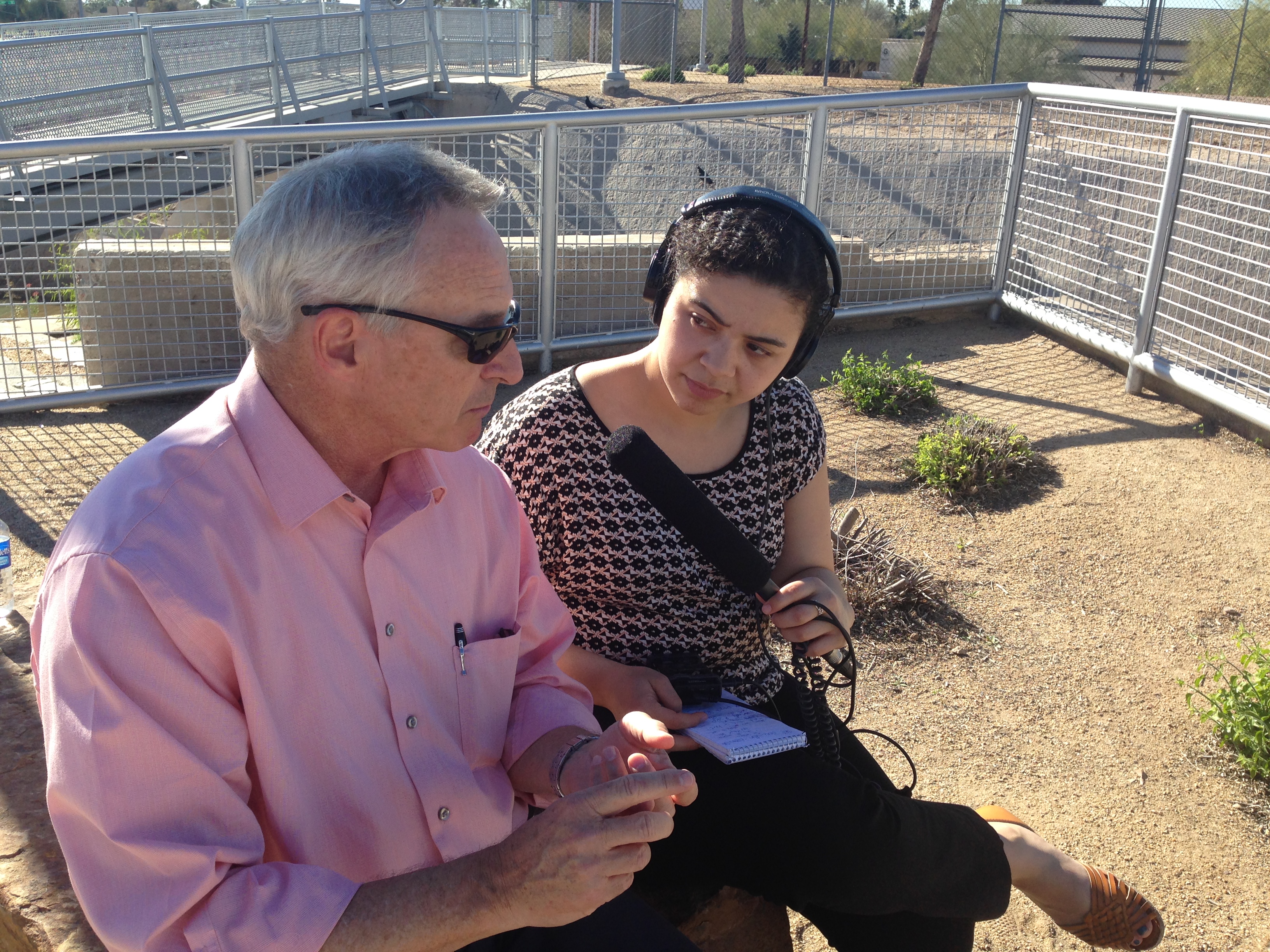
As a general assignment reporter in Cleveland, I admit before being accepted in this project, I thought very little about goings on in Phoenix, Arizona. Unless something in Phoenix made it onto the national news, I probably wasn’t aware of it.
Reporters travel to different locations all the time for stories, but most of the time it’s for breaking news. How do you come up with feature ideas in a city you’ve never been to? It involved a lot of research into what’s happening in Phoenix. It was also helpful to chat with my mentor, Jerome Vaughn, to be able to talk through ideas.
With Next Generation Radio, we’re assigned non-narrated features. I’ve never told a story in this way before. I listened to some examples, but it was hard for me to understand that I could tell a story without my voice actually being in it to explain something, to introduce someone, or even just to sign off on the piece. Without visuals or a reporter telling you where the story takes place, you have to rely on sound to take the listener where they need to go. Some stories just won’t work as non-narrative pieces. There may not be a compelling character to focus on or there isn’t a scene to set the story.
I started my search by looking at local media in central Arizona and reading up on current stories. I searched through community forums to see what residents cared about. Some Arizona stories were similar to those in Cleveland: political stories, economic issues, festivals unique to Phoenix.
I periodically checked the Phoenix section of Reddit, where community members share news and ask questions of other Phoenix Reddit users. Seeing what stories they posted gave me insight on Phoenix even though I was on the other side of the country. On the site, I saw a post about the Tap to Top program, a collaboration between the National Forest Foundation and a local brewing company in Arizona. I thought the collaboration was unlikely, so I looked for more information.
When I started learning about how central Arizona residents get their water, I thought about Ohio and the town of Sebring. Sebring is experiencing issues similar to those in Flint, Michigan – where residents recently learned the water they’ve been drinking is unsafe.
My story idea sparked Jerome’s interest, too. Being news director at WDET in Detroit, Michigan, the Flint water problem is close to home for him.
It struck me that SanTan Brewing and the National Forest Foundation’s Tap to Top campaign’s goal was to educate central Arizona residents on sources of water because even though water there is safe and clean, some residents don’t know where it comes from. And they also may not know that due to the unhealthy state of forests in Northern Arizona, water could be less available in the future. It’s important for Phoenix residents to know how they get their water because they live in a region that is essentially a desert. And as we’ve seen in Flint and Sebring, that knowledge is necessary to being a more informed and healthy citizen.
Looking back on the story and my process before I got to Phoenix, I’ve realized the importance of clear deadlines. I had a hard time balancing my preparation for Next Generation Radio on top of duties from my first full time job. In addition to that, being new in a full-time reporting position increased that pressure.
I wish I would have spent more time preparing, but I also believe this whole project has been a lesson in time management and preparing a story with a quick turnaround – especially when the story may not be the one you intended to tell in the first place. I’ve learned how to “bring heat” when you need an interview on a deadline, but I’ve also learned how to deal with truth in reporting: you may not get the interview, the answers or the story you expected.
The challenging but enjoyable part is turning all of the pieces you do have into a story with a beginning, a middle, and an end. And in a non-narrated story, it’s the voices of the characters, not the reporter, that tell the story.
I’m grateful to Next Generation Radio for the opportunity to learn from a room full of people who understand my experiences and who can shed some light on the insight that comes with years working in public radio.
